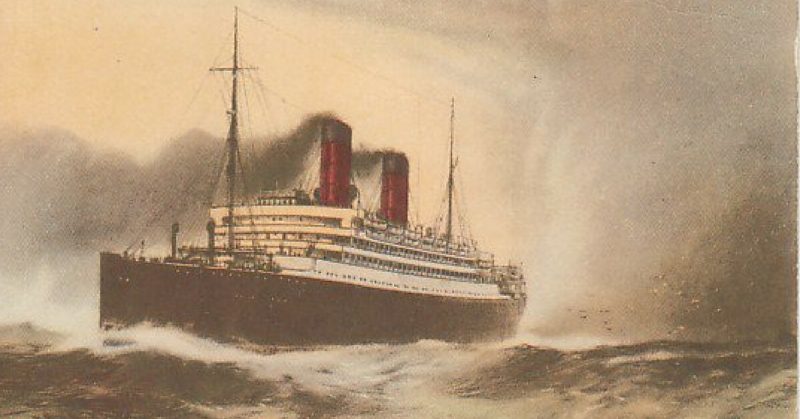It’s hard to imagine a massive cruise ship ever being converted into a naval vessel for war. Think of the largest cruise ships today, complete with water slides and huge interior atriums. Now picture them outfitted with missile launchers, AA guns and more. During WWI cruise ships were quickly converted to be battle ready, an odd concept to begin with, but some of these cruise ships actually fought against each other.
The British RMS Carmania was about 650 ft in length and 19,500 GRT (a now outdated measurement of ship size) and was one of the larger liners of the time. She did trips from Liverpool to New York, even ferrying H.G. Wells, before being converted to a combat ship at the outbreak of WWI. They fitted eight 4.7 inch guns in addition to multiple other weapons.
The SMS Cape Trafalgar was slightly smaller at 613 ft and 18,700 GRT. She traveled from Europe to South America before being militarized by the Germans. She was less outfitted with two 4.1-inch guns but had six one-pounder pom-poms, autocannons so named for the distinctive sound of their firing.
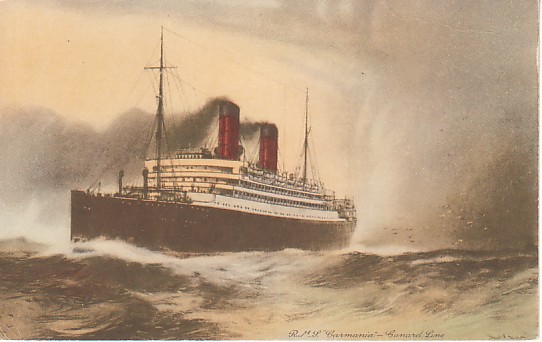
With both militarized, Cape Trafalgar was sent to the remote island of Trindade (some wrongly place this battle off Trinidad, in the Caribbean) far off the coast of Brazil, to be supplied with ammo. Its mission was to disrupt British shipping. To get the element of surprise, the Trafalgar was actually disguised as the British Carmania, removing the third funnel to better look like the two stack Carmania.
At the same time, the real Carmania was tasked with investigating the inhospitable island to flush out any smaller ships that might be using the island as a base. Though it isn’t likely, some reports had it that the Carmania had also decided to disguise itself, in this case, as the Trafalgar. In early September 1914, the Carmania spotted the Trafalgar. The British easily saw through the disguise as they were the real Carmania and prepared to attack.
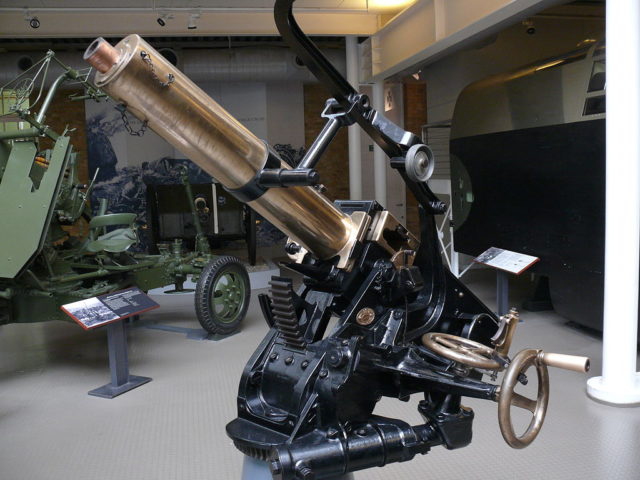
Cruise ships did, and still do, require a huge amount of room to maneuver. Knowing this, their captains both decided to steam out to more open water for the battle. Carmania had the advantage in guns and size, but fired her entire first volley too early, leaving the Trafalgar to land the first wave of attacks. Rounds pummeled through wide viewing windows and men ran across luxurious decks from one gun position to the next.
The bridges of these ships were also not well defended, and soon the bridge of the Carmania became completely ripped apart by the pom-pom fire. Multiple fires were started throughout the Carmania, and she also began taking on water from a hit below the waterline. The two ships got closer together until they were no more than 100 yards apart.
At this distance, it was hard to miss. The Carmania had taken terrible damage, but their larger guns slowly began to turn the tide of battle. Multiple holes were punched open below Trafalgar’s waterline, and she began to list heavily. Just as the Carmania’s fires began to blaze out of control, the Trafalgar ceased fire to begin abandoning ship.
Dozens were killed on the Trafalgar, including their captain, but 279 were able to get on lifeboats as Trafalgar sank. The Carmania only lost nine men, though many of the men were badly wounded. The Carmania was in terrible shape, and would have been a ridiculously easy target for an approaching German armed merchant ship.
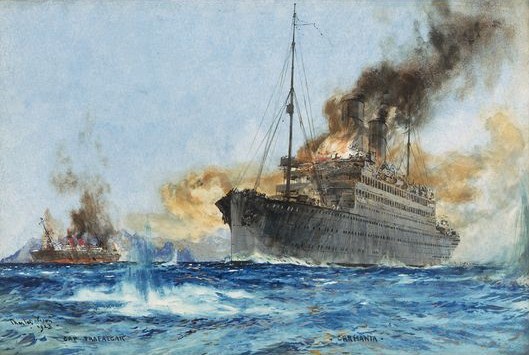
The German ship came in range, but suspected a trap, possibly thinking that the badly smoking Carmania was too good to be true. They decided to turn around without engaging. It wouldn’t be until the next day that another British ship would arrive to save the badly damaged Carmania.
The German prisoners would be held on an island just off of Brazil for the remainder of the war. The Carmania was repaired in Gibraltar and sent back into service patrolling various Atlantic islands. Eventually, she was converted to a troopship until the end of the war. In 1919, the Carmania finally returned to passenger service. She was refitted in 1923 and sailed for many years until she was scrapped in 1932.
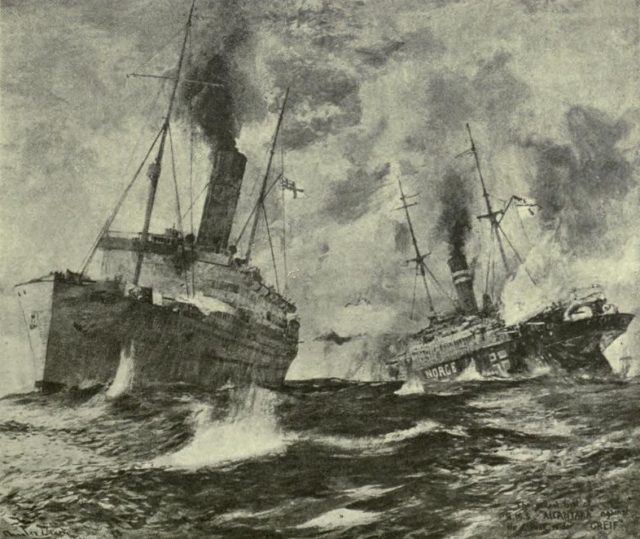
WWI would see many more armed merchantmen, mostly repurposed cargo ships, but some other cruise ships as well. The HMS Alcantara saw just weeks of cruise service before being roped into the British navy. It would go on to fight against a German Merchant Cruiser resulting in both of them sinking. Having such large ships already built allowed the warring nations to have a few more patrol ships where combat wasn’t likely. It also gave them a little bit more firepower in the fleet as a whole, for a minimal cost, just in case they were needed in battle.
